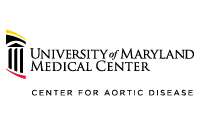Partner Content
Every second of the day, your heart is hard at work, bringing oxygen-filled blood to nourish each cell in the body. It pumps about 2,000 gallons of blood each day. We hear a lot about keeping your heart healthy. But what about your blood vessels? The aorta is the largest blood vessel in the body, and, over time, factors like high blood pressure, smoking, and obesity can wear it down, setting the stage for serious problems.
We caught up with Brad Taylor, MD, MPH, Professor of Surgery at the University of Maryland School of Medicine, Vice Chief of the Division of Cardiac Surgery at the University of Maryland Medical Center, and Co-Director of the University of Maryland Center for Aortic Disease. The center offers effective, long-term comprehensive care for patients with aortic disease and high blood pressure. Surgeons work closely with cardiologists to provide advanced treatments and intensive followup care to keep the condition under control.
What is aortic disease?
Aortic disease is the name for a group of conditions that affect the aorta, which is the body’s largest artery. The aorta runs from the heart through the center of the body, branching off in many places to supply blood to vital organs, your arms, and your legs. Aortic disease causes the aorta’s walls to weaken or bulge outward (a condition called an aortic aneurysm.)
An aortic aneurysm can eventually lead to a tear in the aorta’s wall, called a rupture. If this happens, it can cause massive internal bleeding that can be fatal.
Can anything be done for people who have aortic disease?
Yes. Fortunately, there are many treatment options available for aortic disease. Most aortic conditions are treatable when they are found early, so prompt detection is crucial. The most important first step is to find out whether you have an aortic aneurysm (a bulging area in the aorta) or aortic dissection (a partial tear), so it can be carefully monitored for any changes and treated if necessary.
The good news: There is an easy, painless, noninvasive way to find out if you have aortic disease. It’s called aortic screening.
How does aortic screening work?
With an aortic screening, you can find out whether you are at risk for a tear in your aorta—and that’s information that could save your life. Aortic screening is done with an ultrasound, a very safe test that uses sound waves to create pictures of the body’s internal structures, including the aorta. Ultrasound screening uses no radiation and often takes less than an hour to complete.
We recommend an ultrasound screening for aortic disease if you are any of the following:
- A male between the ages of 65 and 75
- A current or former smoker
- A person with a parent, sibling, or child with a history of aortic disease
- A person who has heart disease, high blood pressure, and/or a body mass index (BMI) over 40
What happens if the screening shows that I have aortic disease?
The University of Maryland Center for Aortic Disease offers patients with aortic disease a team of experts dedicated to your health. Each patient receives a personalized care plan. At first, this may include ongoing monitoring and medication. If the aortic disease continues, there are several surgical repair options, many of which are minimally invasive. Again this year, the University of Maryland Medical Center was ranked as a high-performing hospital for abdominal aortic aneurysm repair by U.S. News & World Report. In addition to its long-standing reputation of providing state-of-the-art care, the University of Maryland Center for Aortic Disease is routinely selected as an FDA testing site for the latest devices and technological innovations in the field of aortic disease.
Surgical treatments include:
- Endovascular grafting: A minimally invasive procedure to repair the aneurysm.
- Open surgery: Conventional surgery may be most appropriate for some patients.
- Hybrid procedures: Using our hybrid operating room, we perform both open and endovascular procedures in the same setting to give patients the least invasive procedure possible.
- Neuromonitoring: Technology for monitoring your brain and spinal cord throughout the surgery to create the best surgical outcome.
How can I reduce my risk of developing or worsening aortic disease?
There are several things you can do to reduce your risk. They include:
- Lowering your blood pressure: High blood pressure is one of the leading causes of aortic conditions. Get regular blood pressure screenings and use a digital blood-pressure cuff at home.
- Making healthy lifestyle changes: Talk with your doctor about changes such as a low-sodium diet and stress reduction.
- Paying attention to symptoms: Always tell your doctor if you have any symptoms like chest pain, weakness, numbness, or fainting.
- Know your family history: Share your family medical history with your doctor to identify any possible genetic conditions.
To make an appointment with one of our specialists or to sign up for an aortic screening, call 410-328-4771 or visit umm.edu/aorticscreening.


